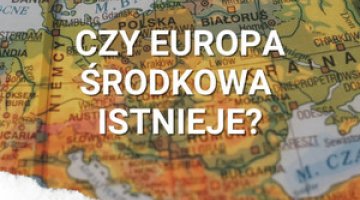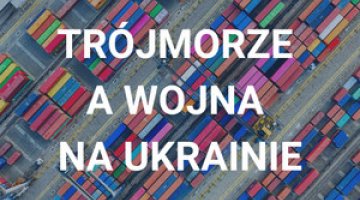Patching the Western Balkan migration route
Increased security on the Macedonian-Greek border has provoked an accumulation of the wave of migrants in Greece. The countries located along the Western Balkan migration route – Macedonia, Serbia, Slovenia and Croatia – led by Austria fear that large numbers of migrants could gather in their territories due to the restrictions imposed by some countries receiving migrants (Austria and Sweden), and have made joint efforts to reduce the flow of migrants and to introduce migrant screening already on the Greek border. Along with the reduced migration pressure linked to the unfavourable weather conditions, these moves have led to a radical decrease in the number of migrants on the Western Balkan route from over 3,000 in December 2015 to around 500 in the last days of February 2016.
Germany has criticised the increased security on the Macedonian-Greek border as a unilateral act that will lead to Greece being excluded from the Schengen Area. Despite this, Germany has refrained from making any decisive moves in order to reinstate the status quo ante. The present situation has caused a reduction in the number of people who register themselves as refugees in Germany and allows pressure to be placed on Greece which began organising hotspots and centres for migrants – something Germany had been unsuccessfully calling for until recently. This means that actions taken by the Balkan countries, despite running contrary to the German rhetoric applied so far, may make it easier to develop comprehensive EU solutions to the migration crisis.
Co-operation on the Balkan route
The first co-operation agreements between the countries located along the Western Balkan migration route were signed back in September 2015. They were aimed above all at streamlining the flow of migrants and preventing hold-ups. However, the significant number of refugees, the unprepared administrations and internal situations in individual countries (e.g. the parliamentary election in Croatia) generated tension between the countries and made it impossible to develop common solutions. However, the EU’s moves proved unsuccessful (including the plan adopted on the EU–Balkans summit in October 2015). The countries which had been receiving migrants began to impose restrictions after the Paris attacks in November 2015, and regional co-operation to reduce the number of migrants, screen them already on the Macedonian-Greek border and to reduce the porousness of state borders started gaining significance.
Macedonia, following the example of Serbia and Croatia, already on 19 November began letting in only those people who had the chance of being granted refugee status, i.e. only those originating from Afghanistan, Syria or Iraq. These people had to hold documents proving their origin (the authenticity of these documents was verified ever more meticulously) and proof of registration at Greek offices. Furthermore, actions were taken to develop common migrant verification forms, criteria and procedures, thus lifting the burden off individual administrations and making it possible to screen the migrants as soon as they arrive at the Macedonian-Greek border. It was also agreed that any individuals which a country deems to be unauthorised to stay in its territory would be received back to the country which it had entered from as part of the readmission procedure. On 21 February, when subsequent groups of migrants from Afghanistan were refused entry to Austria, Slovenia and Croatia, the Macedonian government decided to close the border for migrants from Afghanistan. Daily limits of accepted refugees were also introduced. Austria was the first to do this: it declared on 19 February that it would let in only 3,200 people and accept 80 asylum applications daily. At the time of the meeting of police and border guard heads on 26 February, the countries situated along the Western Balkan route decided they would let in only 580 migrants daily. In fact, the number is even smaller (210 people were let into Macedonia on 29 February and 170 on 1 March). In addition to this, Slovenia and Serbia followed Austria in deciding to make use of the army to protect the state borders; this is expected to limit the attempts to cross the borders outside the checkpoints.
The Vienna declaration vs. the V4 co-operation
One proof of the close co-operation between the countries located along the Western Balkan route was the meeting of the interior and foreign ministers of some EU member states (Austria, Slovenia and Croatia) and Western Balkan countries (Albania, BiH, Montenegro, Kosovo, Macedonia and Serbia) on 24 February (Bulgaria participated as an observer). The meeting was aimed at enhancing regional co-operation to stem the wave of migrants. The declaration signed in Vienna lists similar goals to those set by the Visegrad Group (V4) countries: restricting migration, support for the countries on the Balkan route and offering aid to migrants as close as possible to the places they come from. The main difference between the proposals made in Vienna and those put forward by the V4 is the attitude towards the quota and relocation system, which the signatories of the Vienna Declaration clearly support. Even the government of Serbia, which does not belong to the EU, has declared voluntary participation in the relocation mechanism. All these countries emphasise that they want common EU solutions to be developed and support the distribution of migrants throughout all EU member states.
Germany’s reaction
The basic plan for dealing with the migration crisis which Chancellor Angela Merkel has been pushing for provides for an agreement between the EU and Turkey under which Ankara will restrict the possibilities for refugees to enter the EU in exchange for financial support and the relocation of a part of the refugees from Turkey to EU member states as part of voluntary quotas. For the quota system to be successful, it would be necessary to reduce the porousness of the EU’s external borders (above all, of the Greek border) and to convince the countries which the migrants come from (or possibly the countries where refugee camps are located) to obstruct their movement and/or to readmit them. The aim of this plan is to restrict the influx of refugees to Germany and to maintain the unity of the Schengen Area.
On the one hand, Germany (including Chancellor Angela Merkel) has condemned the moves aimed at reducing the porousness of the Macedonian-Greek border. Germany is especially critical of the fact that the decisions have not been consulted with Greece and Germany (neither of these countries were invited to the conference on 24 February) and of the imposition of the limit of refugees to be accepted to Austria. Until recently, Vienna co-operated very closely with Germany on resolving the migration crisis, especially as regards the intention to relocate Syrians from Turkey in EU member states. In Germany’s opinion, the present policy initiated and coordinated by Austria will cause an accumulation of refugees in Greece, which will be unable to cope with such a large number of incomers, and this may lead to a destabilisation of the country.
On the other hand, the radical reduction of the number of refugees coming to Germany as a result of increased security on the Macedonian-Greek border is beneficial to Germany. On 29 February, 437 people were registered on the German-Austrian border (while a week earlier the number was around 2,000). 38,570 people were registered in Germany in February (92,000 in January). The falling number of refugees coming to Germany will make it possible to prepare the infrastructure needed to accept the quotas of Syrians from Turkey, which is the basic element of Merkel’s plan. This is also particularly important in the context of local elections which will be held on 13 March in Baden-Wurttemberg, Rhineland-Palatinate and Saxony-Anhalt. There is continued disillusionment with the chancellor’s migration policy (59% of Germans are dissatisfied with it, as demonstrated by the Deutschlandtrend survey conducted for ARD TV on 29 February). In reaction to this, Merkel is trying to launch a political offensive, proof of which includes the fact that the Bundestag has adopted a legislation package imposing stricter asylum regulations (Asylpaket II: including restricted possibilities for families to connect), the readmission agreements with Morocco and Algeria, Merkel’s activity in the media, and pressure for an EU–Turkey summit to be held on 7 March. The increased pressure on Greece resulting from the reduced porousness of the Macedonian-Greek border is also beneficial to Berlin, which has been for months been insisting in vain that Greece should effectively protect the EU’s external borders – including the creation of hotspots and the registration of all refugees entering Greece.
Possible developments
According to UNHCR data, at present around 30,000 people are staying in Greece and are unable to enter Macedonia; this includes around 10,000 people right on the border. Maintaining restrictive checks on the Greek-Macedonian border will be a challenge to the poorly-trained Macedonian police and military units, especially given the fact that riots, more attempts to cross the border outside the checkpoints and intensified activity of people smugglers can all be expected. This policy will be impossible to maintain without comprehensive solutions on the EU level, given the expected increase in the number of migrants in spring. The neighbouring countries also fear that the flow of migrants could be redirected to their territories (Albania and Bulgaria). However, considering the difficult geographical conditions and the very repressive policy towards migrants, especially in Bulgaria, the number of migrants who will make attempts to reach Europe via this route will be clearly smaller. The government in Tirana has already announced that it will close the border to migrants if Macedonia does.
All the countries located along the Western Balkan route support restricting the flow of migrants. They fear an accumulated influx of migrants if they have to receive those coming from Greece and at the same time those sent back from the neighbouring countries, especially given the fact that Greece does not accept migrants as part of the readmission procedure. It was confirmed that the countries located along the Western Balkan route have formed a united front during the meeting of the police and border guard heads in Belgrade on 1 March (representatives of Germany and Greece also took part). Especially Austria, Slovenia and Croatia want uncontrolled migration flows to be restricted, and they no longer want to play the role of transit countries from Greece to Germany, considering the burden this entails for their administrations and the security threats. Despite being critical of the increased security on the Macedonian-Greek border and its claims that the EU’s policy towards refugees has been undermined by such unilateral moves, Germany will capitalise on the decreasing number of migrants to develop the solution to the present crisis which Merkel has been pushing for, i.e. convincing Ankara to fulfil its part of the obligations, and its partners inside the EU to accept the quotas of refugees from Turkey.




